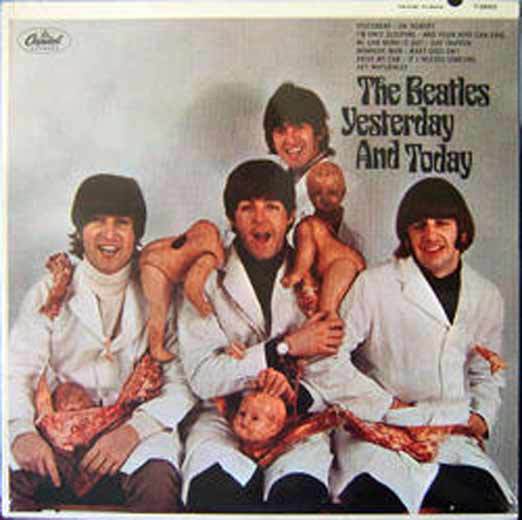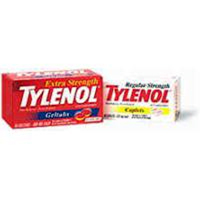Top 10 Worst Marketing Gaffes, Flops, and Disasters
The Consumerist’s guide to the top 10 worst gaffes, flops, and disasters in the history of American marketing and advertising.
10) McDonald’s: “I’d Hit It”
In January 2005, McDonald’s launched an ill-conceived banner campaign featuring a young man slavering over a double cheeseburger. “Double cheeseburger? I’d hit it. I’m a dollar menu guy,” went the animated ad. Amidst controversy, McDonald’s pulled the banners and said their marketing department misunderstood the term. For our part, The Consumerist only copulates with food that’s certified organic fair-trade.
9) New Coke
8) Honda’s Asimo Falls Down Stairs
7) Calvin Klein’s Amateur Porno Jean Commercial
Calvin Klein has drawn frequent ire for its provocative advertising and use of teenage models. The series of commercials above, however, pushed the envelope right of the cliff. They feature what appear to be “barely (if even) legal” amateur models in a wood-paneled room being interviewed by a creepy older man. For all intents and purposes, they look like prequels to amateur pedophile pornos. Conceptually brilliant but deeply unnerving, the work perhaps deserves a place in the Whitney rather than Kansas TV screens. In August 1995 the commercials were yanked from the airways and Calvin Klein himself issued a public apology.
6) Microsoft Blue Screen Of Death At Press Conference
5) Beatles Yesterday and Today Butcher Cover
 On June 14th, 1966, The Fab Four shocked their American record-label with the the infamous “Butcher Cover” of their album Yesterday and Today. After slipping through the cracks during pre-production, 750,000 copies were distributed across America. At first Capitol Records ordered the albums recalled and destroyed, but then it sent out replacement covers to be glued onto the remaining copies.Though Lennon and McCartney were in on the joke, George Harrison later expressed his disapproval, “I thought it was gross, and I also thought it was stupid. Sometimes we all did stupid things thinking it was cool and hip when it was naive and dumb; and that was one of them.”
On June 14th, 1966, The Fab Four shocked their American record-label with the the infamous “Butcher Cover” of their album Yesterday and Today. After slipping through the cracks during pre-production, 750,000 copies were distributed across America. At first Capitol Records ordered the albums recalled and destroyed, but then it sent out replacement covers to be glued onto the remaining copies.Though Lennon and McCartney were in on the joke, George Harrison later expressed his disapproval, “I thought it was gross, and I also thought it was stupid. Sometimes we all did stupid things thinking it was cool and hip when it was naive and dumb; and that was one of them.”
Yesterday and Today went on to become one of the only Beatle’s albums to actually lose money, thought this probably had less to do with its cover art than that it was a compilation album with no new material.
Bonus: The lame cover it was replaced with.
4) The Tylenol Cyanide Scare of 1982
 Some product disasters illustrate how a swift company response can mitigate the damaging effects of bad publicity. When Chicago residents suddenly started to die from unknown causes, inspectors drew a link to the Tylenol Extra Strength capsules the citizens took. After ruling out sabotage from the manufacturing facilities, investigators determined someone tampered with the bottles and placed them back on store shelves.
Some product disasters illustrate how a swift company response can mitigate the damaging effects of bad publicity. When Chicago residents suddenly started to die from unknown causes, inspectors drew a link to the Tylenol Extra Strength capsules the citizens took. After ruling out sabotage from the manufacturing facilities, investigators determined someone tampered with the bottles and placed them back on store shelves.
Although many predicted the doom of the Tylenol brand, the pain reliever bounced back within a number of years. Thanks to a swift PR response which included media outreach, discontinued advertising, and putting the safety of the consumer before profit, headache-sufferers eventually forgave Tylenol.
Bonus: Thanks in part to the Tylenol scare, urban legends of cyanide poisoners linger in the public consciousness, casting a looming specter over Halloween
3) Ford Edsel
2) AC vs DC: Thomas Edison Electrocutes Topsy The Elephant
Edison launched a a bitter publicity campaign, designed to frighten the public into using Direct Current. Under his command, Edison filmed and publicized a number of Alternating Current executions of animals including that of Topsy the Elephant (shown). The executions were designed to show how unsafe Alternating Current could be, as it “Westinghoused” his victims. Despite Edison’s fervent desire to bring Direct Current into every home in America, he ultimately lost the War of Currents due to the impracticality of wide scale deployment.
Bonus: Harold Brown, an Edison employee, developed the first electric chair to further underscore AC’s danger. After the first botched use of the chair in 1890, Westinghouse commented, “They would have done better using an axe.”
1) The LZ 129 Hindenburg
If the Nazis had their druthers, the Hindenburg would have carried a swastika as prominently as we might have seen a Goodyear logo, but zeppelin designer Hugo Eckener was uneasy with the use of his airships for propaganda. He was much more comfortable with envisioning a future of mass passenger transport across the Atlantic carried upon the decks of his flying ships.
Due to a US embargo on helium, Eckener was forced to use flammable hydrogen in order to keep his beloved dirigible aloft for its transatlantic journey to Lakehurst, NJ. Amid an audience of thousands of spectators and radio personality Herbert Morrison’s eyewitness report, the Hindenburg suddenly burst into a fiery ball of flames. The images would find themselves ingrained on the collective consciousness of popular art and Morrison’s words, “Oh, the humanity!”, would outlive the disaster for years to come. Many note that other political factors played a role in the long-term demise of the zeppelin, but nothing captured the moment more perfectly than the image of the Hindenburg’s flaming metal skeleton as silhouetted people scattered in terror.
Hot on the tailfins of the disaster was an-up-and coming airline named Pan America. Their stable of flying “Clippers” filled the Hidenburg’s void.
— THOMAS MOORE and BEN POPKEN
Want more consumer news? Visit our parent organization, Consumer Reports, for the latest on scams, recalls, and other consumer issues.

